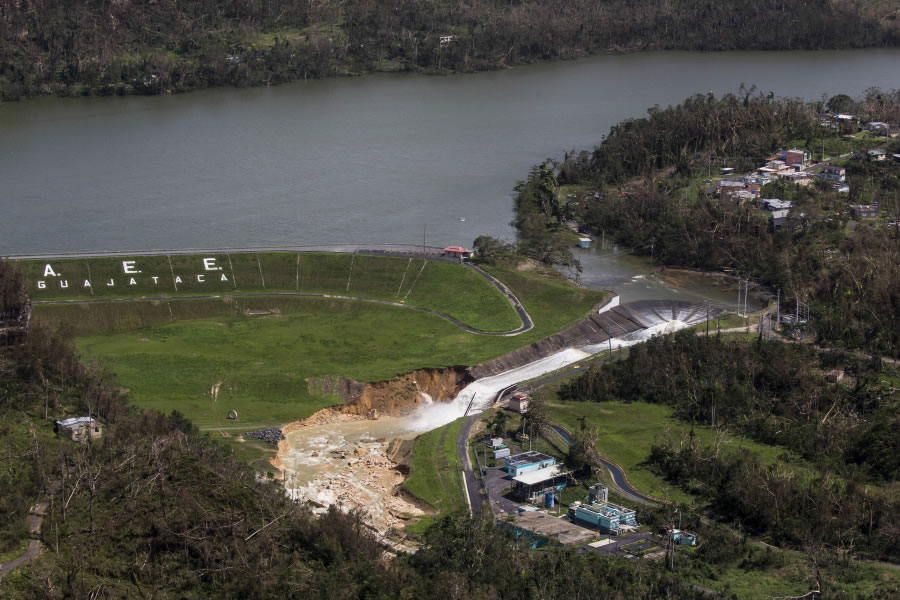SAN JUAN, Puerto Rico — A humanitarian crisis grew Saturday in Puerto Rico as towns were left without fresh water, fuel, power or phone service following Hurricane Maria’s devastating passage across the island.
A group of anxious mayors arrived in the capital to meet with Gov. Ricardo Rossello to present a long list of items they urgently need. The north coastal town of Manati had run out of fuel and fresh water, Mayor Jose Sanchez Gonzalez said.
“Hysteria is starting to spread. The hospital is about to collapse. It’s at capacity,” he said, crying. “We need someone to help us immediately.”
The death toll from Maria in Puerto Rico stood at seven after a body found in a river was reported Saturday, and the toll was likely to rise.
Authorities in the town of Vega Alta on the north coast said they had been unable to reach an entire neighborhood called Fatima, and were particularly worried about residents of a nursing home.
“I need to get there today,” Mayor Oscar Santiago said. “Not tomorrow, today.”
Federal officials said a dam upstream of the towns of Quebradillas and Isabela in northwest Puerto Rico was cracked but had not burst by Saturday afternoon. Video from a helicopter flight showed water pouring from the Guajataca Dam. Federal officials said Friday that 70,000 people were being evacuated, but Javier Jimenez, mayor of the town of San Sebastian, said he believed the number was far smaller.
He said only several hundred families were told to leave the banks of the Guajataca River. San Sebastian is to the west of the dam and outside the worst flood zone.
The discrepancy could not immediately be explained.
The 345-yard dam, which was built around 1928, holds back a man-made lake covering about 2 square miles. More than 15 inches of rain from Maria fell on the surrounding mountains, swelling the reservoir.
An engineer inspecting the dam reported a “contained breach” that officials quickly realized was a crack that could be the first sign of total failure of the dam, U.S. National Weather Service meteorologist Anthony Reynes said.
“There’s no clue as to how long or how this can evolve. That is why the authorities are moving so fast because they also have the challenges of all the debris. It is a really, really dire situation,” Reynes said.
In San Juan, Neida Febus wandered around her neighborhood with bowls of cooked rice, ground meat and avocado, offering food to the hungry. The damage was so extensive, the 64-year-old retiree said, that she didn’t think the power would be turned back on until Christmas.
“This storm crushed us from one end of the island to the other,” she said.
Hour-long lines formed at the few gas stations that reopened on Friday and anxious residents feared power could be out for weeks — or even months — and wondered how they would cope.
“I’m from here. I believe we have to step up to the task. If everyone leaves, what are we going to do? With all the pros and the cons, I will stay here,” Israel Molina, 68, who lost roofing from his San Juan mini-market to the storm, said, and then paused. “I might have a different response tomorrow.”




